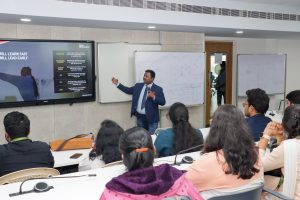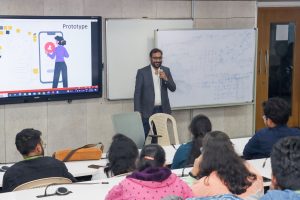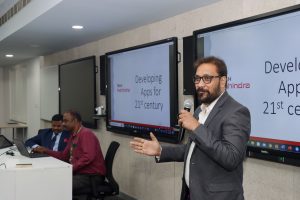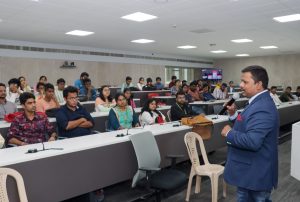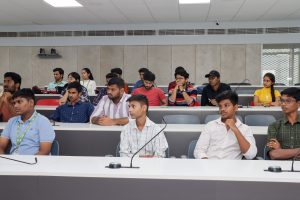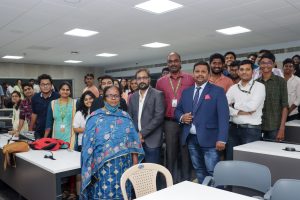All Management News
- State of Play and Future of Atomic Clocks: Nobel Laureate Prof. David Wineland Joined EPIC-2022 December 21, 2022
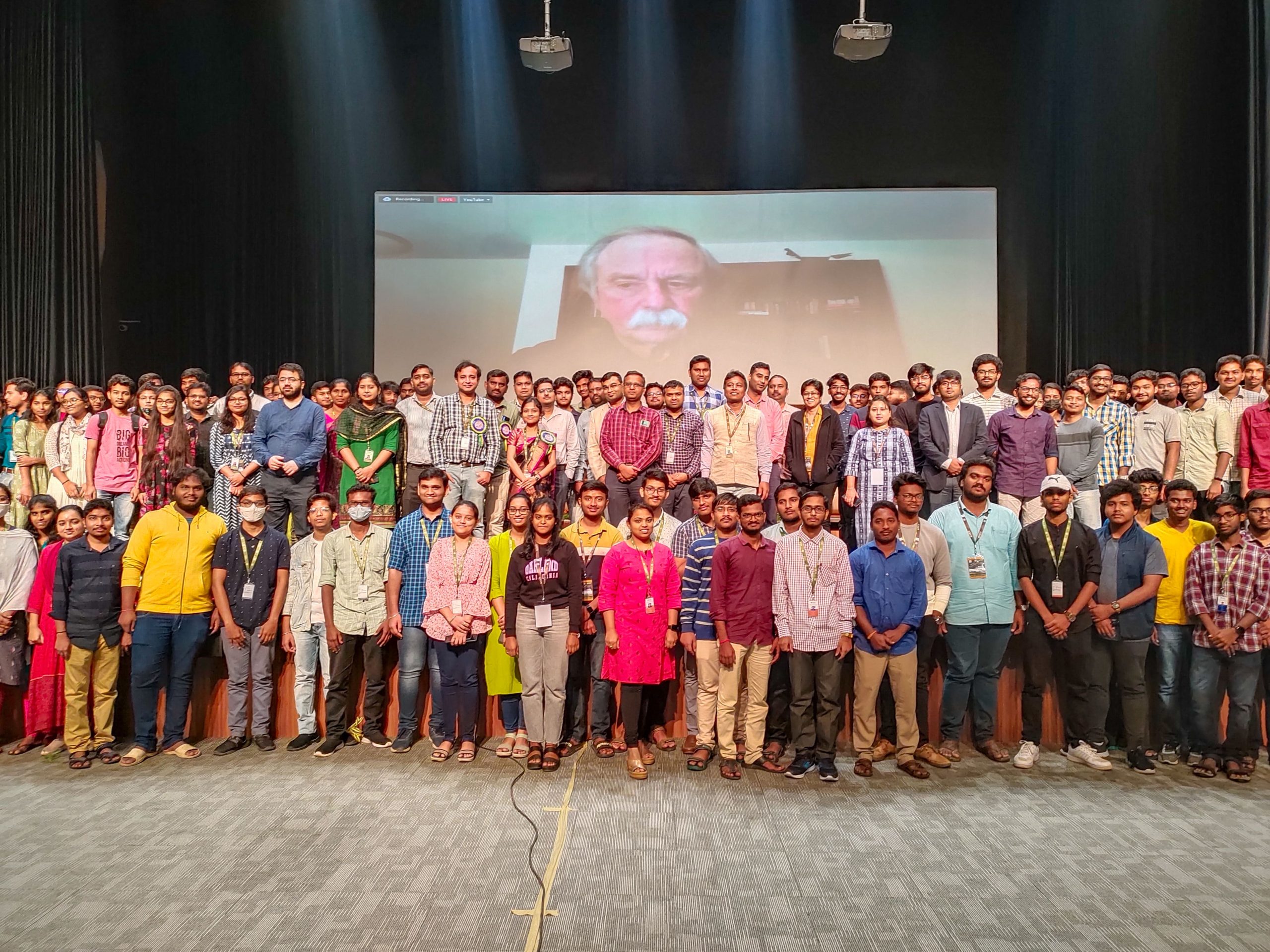 Nobel Laureate Prof. David Wineland, University of Oregon, USA, virtually joined the International Conference on Electronic and Photonic Integrated Circuits (EPIC- 2022) hosted by SRM University-AP from December 15 to 17, 2022. The American Physicist who was awarded the 2012 Nobel Prize in Physics for devising methods to study the quantum mechanical behaviour of individual ions delivered an insightful lecture on Atomic Clocks. The three-day-long conference organised by the Department of Electronics and Communication Engineering, SRM AP, concluded on Saturday, December 17, 2022; the Convenors of this event were Dr Pradyut Kumar Sanki and Dr Swagata Samanta.
Nobel Laureate Prof. David Wineland, University of Oregon, USA, virtually joined the International Conference on Electronic and Photonic Integrated Circuits (EPIC- 2022) hosted by SRM University-AP from December 15 to 17, 2022. The American Physicist who was awarded the 2012 Nobel Prize in Physics for devising methods to study the quantum mechanical behaviour of individual ions delivered an insightful lecture on Atomic Clocks. The three-day-long conference organised by the Department of Electronics and Communication Engineering, SRM AP, concluded on Saturday, December 17, 2022; the Convenors of this event were Dr Pradyut Kumar Sanki and Dr Swagata Samanta.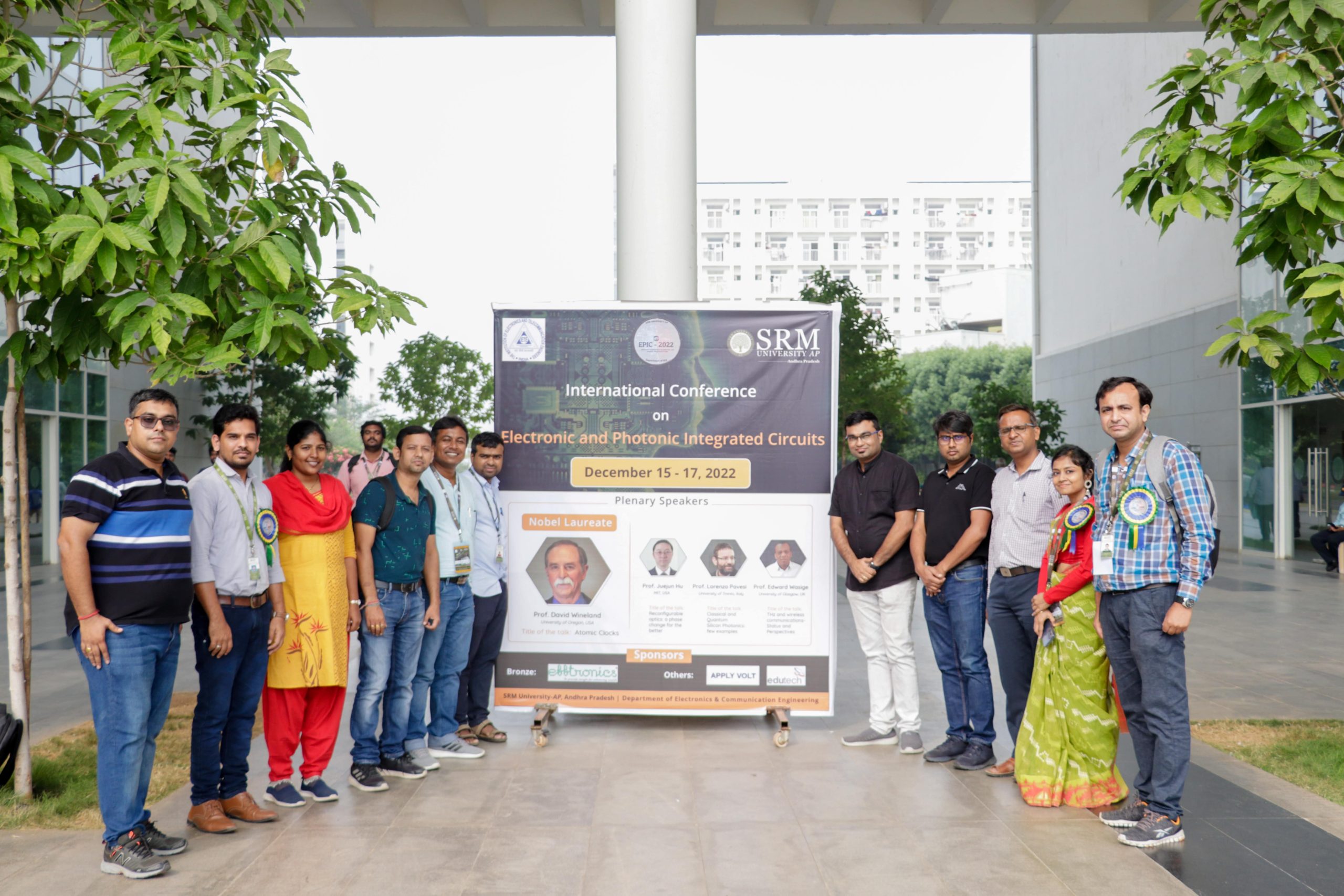 Nobel Laureate Prof. David Wineland elaborated on why the world needs precise clocks, the basics of how atomic clocks work, optical atomic clocks, the state of play and what the future might hold. Prof. Juejun Hu, Massachusetts Institute of Technology, USA; Prof. Edward Wasige, University of Glasgow, UK; and Prof. Lorenzo Pavesi, University of Trento, Italy were the Plenary speakers of this conference. Prof. Amlan Chakrabarti, Director, A. K. Choudhury School of Information Technology, University of Calcutta; Prof. Shankar Kumar Selvaraja, IISc Bangalore; Prof. Chetna Singhal, IIT Kharagpur; Prof. Naren Naik, IIT Kanpur; Prof. Samaresh Das, IIT Delhi; Prof. Shanti Bhattacharya, IIT Madras; Dr. Pranabendu Ganguly, IIT Kharagpur; Prof. Sarbani Ghosh, BITS Pilani; Dr. Bruno Romeiro, International Iberian Nanotechnology Laboratory, Portugal; Prof. Sakellaris Mailis, Skolkovo Institute of Science and Technology, Moscow, Russia; Prof. Shyamal Mondal, Defence Institute of Advanced Technology; Prof. Enakshi Bhattacharya, IIT Madras were the eminent speakers of the first two days. Prof. Achanta Venugopal, Director, NPL Delhi; Prof. T Srinivas, IISc Bangalore, and Prof. Ravindra Jha, IIT Guwahati, gave the keynote speeches on the last day of the programme. A session on ‘Women in Devices, Circuits & Systems’ was delivered by Prof. Sujata Pal, IIT Ropar; and Prof. Takako Hashimoto, Vice President of the Chiba University of Commerce (CUC), Japan; Industrial Talk by Dr Sajal Sarkar, Power Grid Corporation of India Ltd.; Dr. Pradipta Patra, Samsung Semiconductor India; Dr. Satyabrata Sarangi, Meta; Sunnyvale, California, USA; and Dr. Souvik Kundu, Intel Labs, USA, were the other highlights of the day.
Nobel Laureate Prof. David Wineland elaborated on why the world needs precise clocks, the basics of how atomic clocks work, optical atomic clocks, the state of play and what the future might hold. Prof. Juejun Hu, Massachusetts Institute of Technology, USA; Prof. Edward Wasige, University of Glasgow, UK; and Prof. Lorenzo Pavesi, University of Trento, Italy were the Plenary speakers of this conference. Prof. Amlan Chakrabarti, Director, A. K. Choudhury School of Information Technology, University of Calcutta; Prof. Shankar Kumar Selvaraja, IISc Bangalore; Prof. Chetna Singhal, IIT Kharagpur; Prof. Naren Naik, IIT Kanpur; Prof. Samaresh Das, IIT Delhi; Prof. Shanti Bhattacharya, IIT Madras; Dr. Pranabendu Ganguly, IIT Kharagpur; Prof. Sarbani Ghosh, BITS Pilani; Dr. Bruno Romeiro, International Iberian Nanotechnology Laboratory, Portugal; Prof. Sakellaris Mailis, Skolkovo Institute of Science and Technology, Moscow, Russia; Prof. Shyamal Mondal, Defence Institute of Advanced Technology; Prof. Enakshi Bhattacharya, IIT Madras were the eminent speakers of the first two days. Prof. Achanta Venugopal, Director, NPL Delhi; Prof. T Srinivas, IISc Bangalore, and Prof. Ravindra Jha, IIT Guwahati, gave the keynote speeches on the last day of the programme. A session on ‘Women in Devices, Circuits & Systems’ was delivered by Prof. Sujata Pal, IIT Ropar; and Prof. Takako Hashimoto, Vice President of the Chiba University of Commerce (CUC), Japan; Industrial Talk by Dr Sajal Sarkar, Power Grid Corporation of India Ltd.; Dr. Pradipta Patra, Samsung Semiconductor India; Dr. Satyabrata Sarangi, Meta; Sunnyvale, California, USA; and Dr. Souvik Kundu, Intel Labs, USA, were the other highlights of the day.Additionally, a Panel Discussion was handled by Dr Rajkumar Elagiri, Apex Semiconductor; Dr Kamal Das, IBM Research Lab; and Dr Soumya Maity, Dell Technologies. Furthermore, the Young Researcher Forum conducted as part of the conference featured renowned academicians such as Dr Biswabandhu Jana, MIT and Harvard Hospital, USA; Dr Bibhas Manna, TU Wien, Germany; Dr Ankita Jain, Queens University, Canada; Dr Subhrajit Mukherjee, Technion – Israel Institute of Technology, Israel; Dr Rajat Subhra Karmakar, National Taiwan University, Taiwan; Dr Surajit Bose, Leibniz University Hannover, Germany; Dr Akanksha Pathak, Emory University, School of Medicine, USA; Dr Debidas Kundu, Carleton University, Canada; and Mayur Kumar Chhipa, ISBAT University, Kampala, Uganda, East Africa.
A pre-conference event: Smart SRM Hackathon – 24 Hrs Circuit Design Contest was organised on December 14, 2022. Poster & technical exhibition called Jigyasa took place on the first day of the conference EPIC-2022.
Continue reading → - A Business Rendezvous with Tech Mahindra December 21, 2022
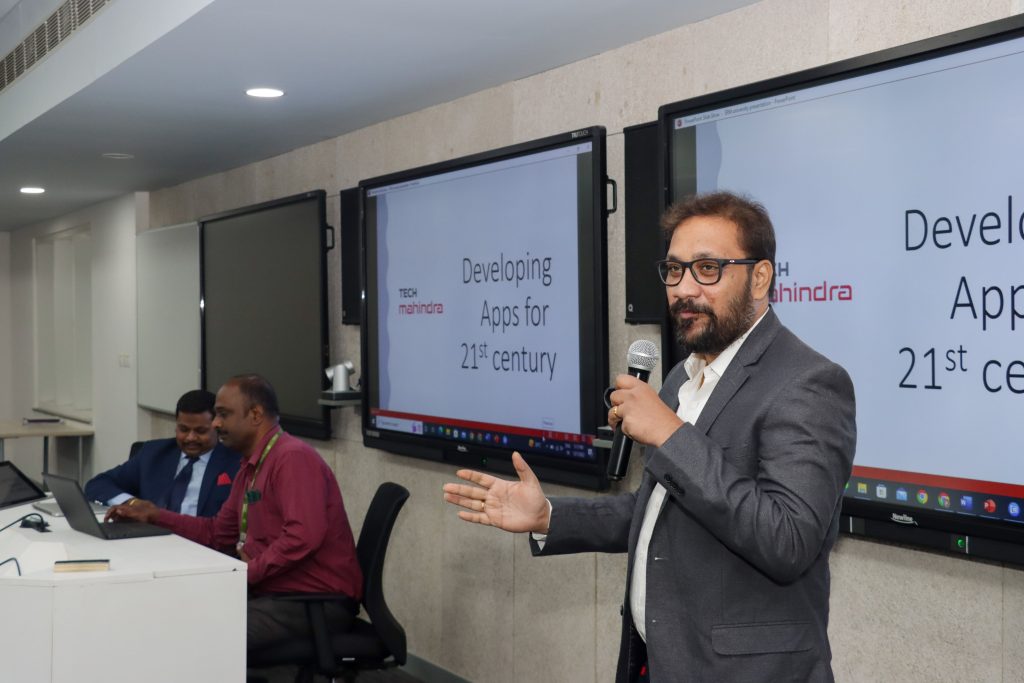
Paari School of Business upholds the importance of connecting business knowledge with hands-on market experience to develop competent candidates with refined managerial skills, ready to tackle the challenges of the business world. Their consistent approach to conducting industrial talks and research invites business giants from across the world to engage in insightful discourse with the students of management. The recent industry talk organised by the school invited a team from Tech Mahindra, the multinational information technology services and consulting company to provide exposure to practical compatibility of their knowledge to the requirements demanded by profession. The talk featured executives from the renowned enterprise addressing students on relevant trends and recent strategies in the market.
Mr Srinivas Reddy, Sr. Recruitment Manager and Vijayawada Location Leader, BFSI & Healthcare and Life Science’s Pan India Recruitment Leader held an engaging talk on the topic, “People Management Influence on IT Industry Business”. Mr Reddy highlighted how to connect with industry professionals and the influence of business networks in the IT business. He also discussed the importance of connecting business knowledge with the technical domain. Mr Kalyan Yelisetty, Manager – Product Development and Testing operations, also addressed the students in the evolving trends in the field of product development and testing in his lecture on “Developing products for the 21st century”. The Industry talk also threw light upon placement opportunities for business students.
The Industry talks and lectures aim at assisting students in aligning themselves with the latest requirements of the industry and sharpening their business acumen with expert discourses on pertinent topics related to the field. The Paari School of Business manifests this vision and upholds the need for bridging the gap between business management and technological advancements.
Continue reading → - Successful Food-Tech Venture hoists Jaswanth to Newer Heights! December 19, 2022
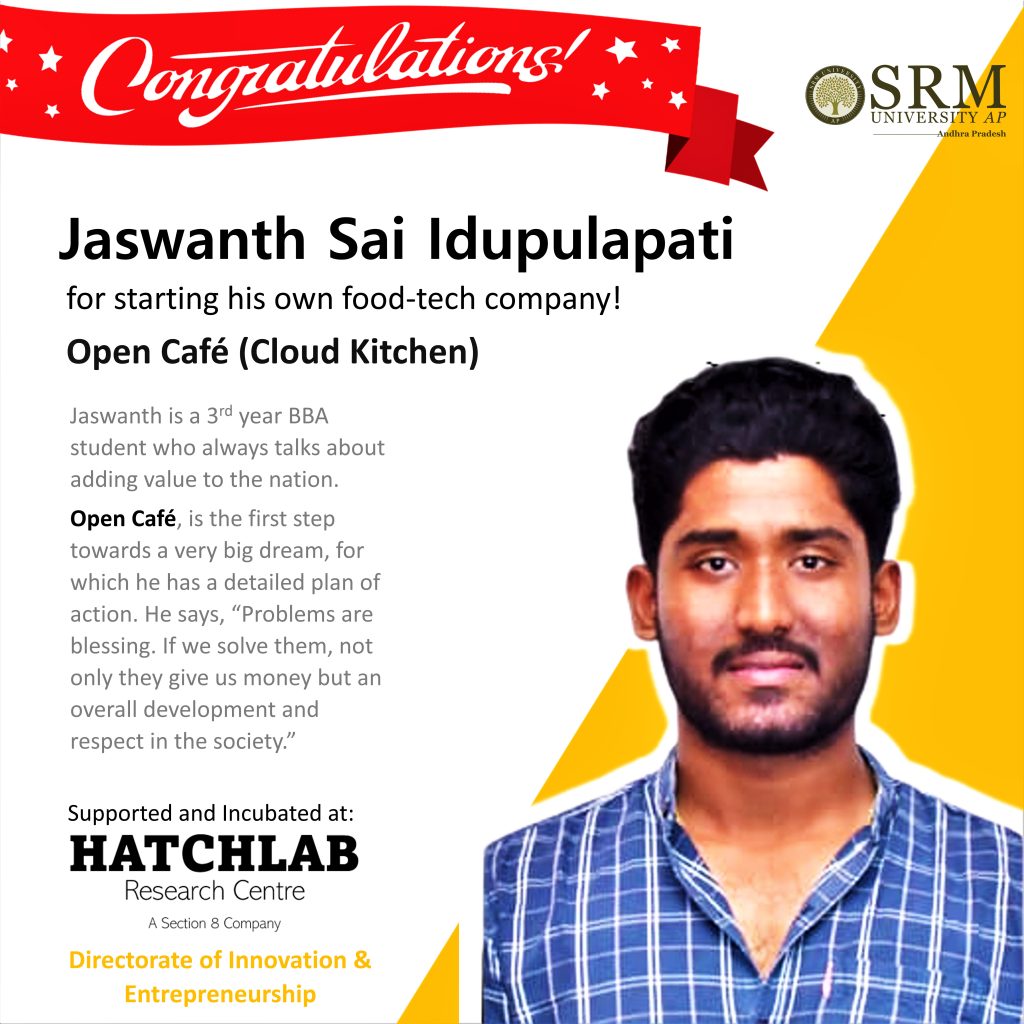
“The best way to predict the future is to create it”. Jaswanth Sai has proved to be a living and breathing manifestation of this quote with his determination and hard work. The Directorate of Entrepreneurship and Innovation is pleased to announce that Jaswanth Sai Idupulapati, a 3rd year BBA student, has successfully started his own food-tech company, Open Cafe, a cloud kitchen enterprise. Cloud kitchens are centralised, licensed commercial food production facilities where one to dozens of restaurants rent space to prepare delivery-optimised menu items. Jaswanth, an enthusiastic student of the Hatchlab Research Centre had started his business with an investment of Rs. 5000/- and today his turnover is more than 20L per month for a business that was started just three months ago!
“We invested Rs. 5000 and brought a van full of biriyani outside the main gate of our university. Hours passed and not a single sale happened. Those moments were not only depressing but also terribly demotivating. But as a leader, I had to rise up! We immediately changed the pricing strategy and shared the same via WhatsApp groups. In the next 45 minutes, we were left with empty vessels and a handful of cash. Profit was less; the learning and our confidence levels were mountain high,” Jaswanth excitedly mentioned about his first day of business.
As of now, Open Cafe caters to more than 1000+ students from SRM AP and VITAP, with quality food items that are delivered with a caption – 15 minutes delivery. Jaswanth has 15 employees and a big renovated kitchen, generating employment and thousands of satisfied customers.
His dedication and hardcore willpower allowed the materialisation of his idea into reality. Congratulations to Jaswanth Sai for his astonishing achievement!
Continue reading → - Dr Raviteja KVNS Received the Best Paper Award at TRACE 2022 December 16, 2022
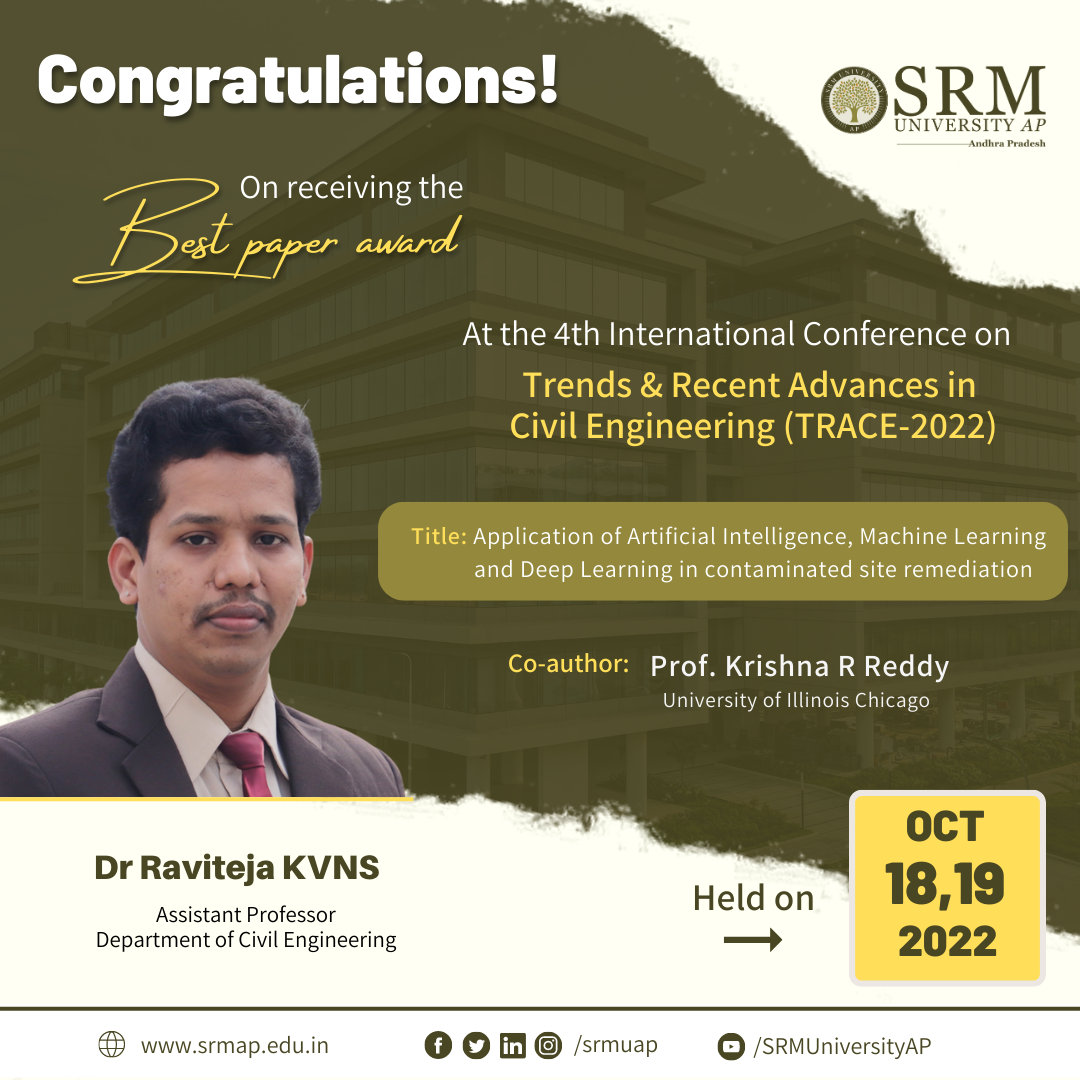 Soil and groundwater contamination is closely interlinked with human society because of its direct impact on population health and socioeconomic activities. The design and implementation of site remediation can be expensive, time-consuming, and may require much human effort. Emerging technologies such as Artificial Intelligence, Machine Learning, and Deep Learning have the potential to make site remediation cost-effective with reduced human effort.
Soil and groundwater contamination is closely interlinked with human society because of its direct impact on population health and socioeconomic activities. The design and implementation of site remediation can be expensive, time-consuming, and may require much human effort. Emerging technologies such as Artificial Intelligence, Machine Learning, and Deep Learning have the potential to make site remediation cost-effective with reduced human effort.Assistant Professor Dr Raviteja KVNS, Department of Civil Engineering, has received the Best Paper Award at the Fourth International Conference on Trends and Recent Advances in Civil Engineering (TRACE) 2022 for his paper Application of artificial intelligence, machine learning and deep learning in contaminated site remediation. The conference was held at Amity University, Uttar Pradesh, on October 18 and 19, 2022. His research reports the applications of AI and ML in contaminated site remediation.
Dr Raviteja’s future research plan includes studying potential applications of various AI, ML and DL techniques for Geotechnical and Geo-environmental design and testing applications so as to reduce the labours of physical and repetitive testing and associated human effort. This further improves precision as well as aids in decision-making. He has collaborated with Prof. Krishna R Reddy, University of Illinois Chicago, for this research work.
Abstract
Soil and groundwater contamination is caused by improper waste disposal practices and accidental spills, posing a threat to public health and the environment. It is imperative to assess and remediate these contaminated sites to protect public health and the environment as well as to assure sustainable development. Site remediation is inherently complex due to the many variables involved, such as contamination chemistry, fate and transport, geology, and hydrogeology. The selection of remediation method also depends on the contaminant type and distribution and subsurface soil and groundwater conditions. Depending on the type of remediation method, many systems and operating variables can affect the remedial efficiency. The design and implementation of site remediation can be expensive, time-consuming, and may require much human effort. Emerging technologies such as Artificial Intelligence, Machine Learning, and Deep Learning have the potential to make site remediation cost-effective with reduced human effort. This study provides a brief overview of these emerging technologies and presents case studies demonstrating how these technologies can help contaminated site remediation decisions.
- Dr Md Faiz Ahmad December 16, 2022
- EEE Students Visited Dr Narla Thatharao Thermal Power Station (NTTPS) December 16, 2022
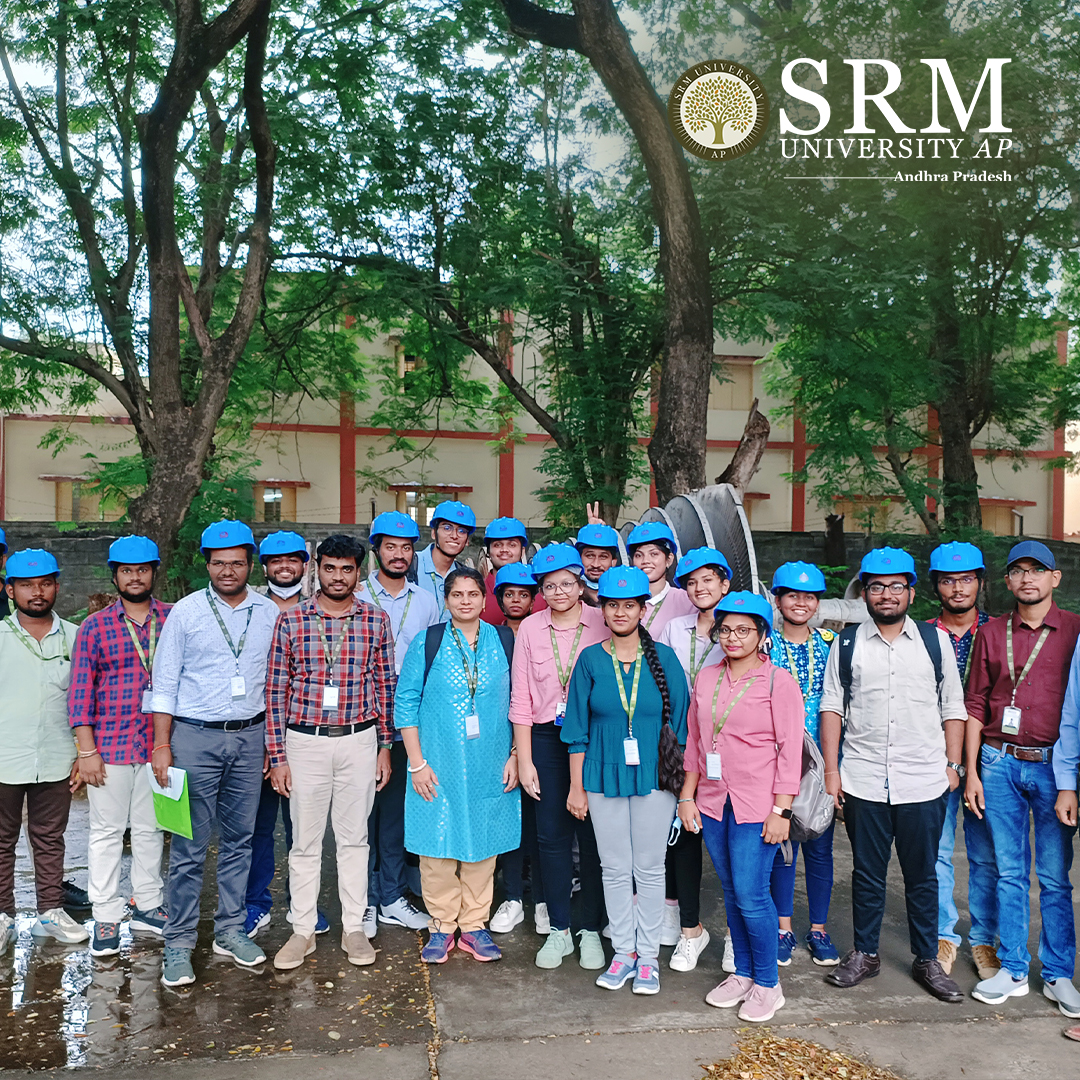 Industrial visit is an efficient learning strategy that nullifies the distance between academia and industry. Students and faculty of the Department of Electrical and Electronics Engineering visited Dr Narla Thatharao Thermal Power Station (NTTPS) on November 21, 2022. The objective of the visit was to give an overview of the Thermal Power plant, which is a coal-based power plant where coal is transported from coal mines to the power plant by railway in wagons or a merry-go-round system.
Industrial visit is an efficient learning strategy that nullifies the distance between academia and industry. Students and faculty of the Department of Electrical and Electronics Engineering visited Dr Narla Thatharao Thermal Power Station (NTTPS) on November 21, 2022. The objective of the visit was to give an overview of the Thermal Power plant, which is a coal-based power plant where coal is transported from coal mines to the power plant by railway in wagons or a merry-go-round system.The state-of-the-art construction and technologies amazed the students as they experienced an insightful industrial visit that exposed them to the actual working of a thermal power plant while enforcing their theoretical knowledge of Power Systems, Control Systems and Electrical Machines. Students from semesters one to four participated in the industry visit. Dr Somesh Vinayak Tewari, Dr Shubh Lakshmi, Dr Bhamidi Lokeshgupta, Dr Ramanjaneya Reddy U, and Dr Venkata Ramireddy Y were the faculty who accompanied the students.
A Detailed Account of the Industry Visit
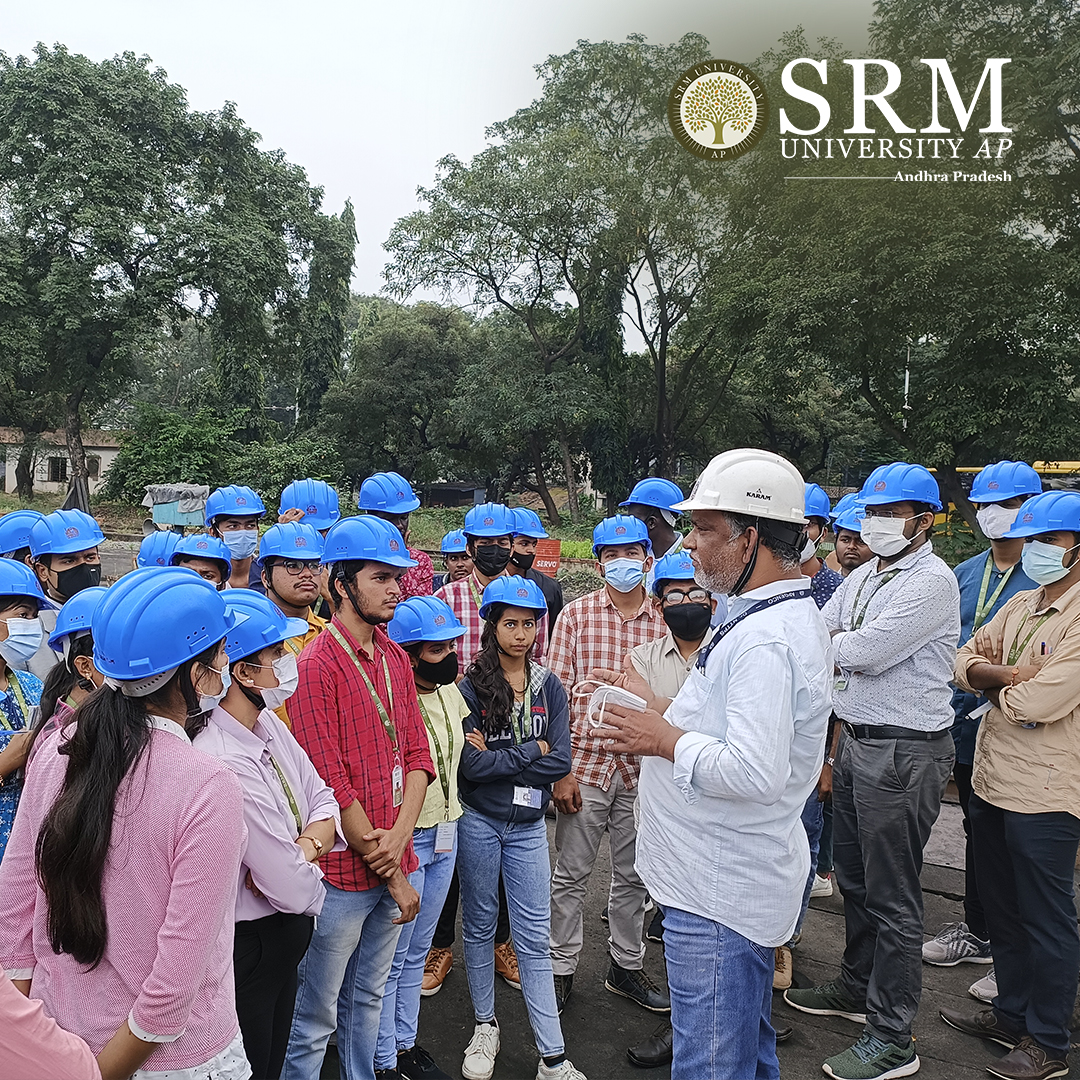 Coal is unloaded from the wagons using wagon tippler units to a moving underground conveyor belt. This coal from the mines is of no uniform size. So, it is taken to the Crusher house and crushed to a size of 20 mm. From the crusher house, the coal is either stored in dead storage, which serves as coal supply in case of coal supply bottleneck or to live storage in the raw coal bunker in the boiler house. Raw coal from the raw coal bunker is supplied to the Coal Mills by a Raw Coal Feeder. The Coal Mills or pulverizer pulverizes the coal. The powdered coal from the coal mills is carried to the boiler in coal pipes by high-pressure hot air. The pulverized coal air mixture is burnt in the boiler in the combustion zone.
Coal is unloaded from the wagons using wagon tippler units to a moving underground conveyor belt. This coal from the mines is of no uniform size. So, it is taken to the Crusher house and crushed to a size of 20 mm. From the crusher house, the coal is either stored in dead storage, which serves as coal supply in case of coal supply bottleneck or to live storage in the raw coal bunker in the boiler house. Raw coal from the raw coal bunker is supplied to the Coal Mills by a Raw Coal Feeder. The Coal Mills or pulverizer pulverizes the coal. The powdered coal from the coal mills is carried to the boiler in coal pipes by high-pressure hot air. The pulverized coal air mixture is burnt in the boiler in the combustion zone.Generally, in modern boilers, a tangential firing system is used where the coal nozzles/guns form a tangent to a circle. The temperature in the fireball is of the order of 1300˚C. The boiler is a water tube boiler hanging from the top. Water is converted to steam in the boiler, and steam is separated from water in the boiler Drum. The saturated steam from the boiler drum is taken to the Low-Temperature Superheater, Platen Superheater and Final Superheater, respectively, for superheating. The superheated steam from the final superheater is taken to the High-Pressure Steam Turbine (HPT). In the HPT, the steam pressure is utilised to rotate the turbine, and the resultant is rotational energy. From the HPT, the outcoming steam is taken to the Reheater in the boiler to increase its temperature as the steam becomes wet at the HPT outlet. After reheating, this steam is taken to the Intermediate Pressure Turbine (IPT) and then to the Low-Pressure Turbine (LPT). The outlet of the LPT is sent to the condenser for condensing back to water by a cooling water system. This condensed water is collected in the Hot well and sent to the boiler in a closed cycle. The rotational energy imparted to the turbine by high-pressure steam is converted to electrical energy in the Generator.
Continue reading → - Aloha 2022: The magnificent fresher’s day celebration at SRM AP December 15, 2022
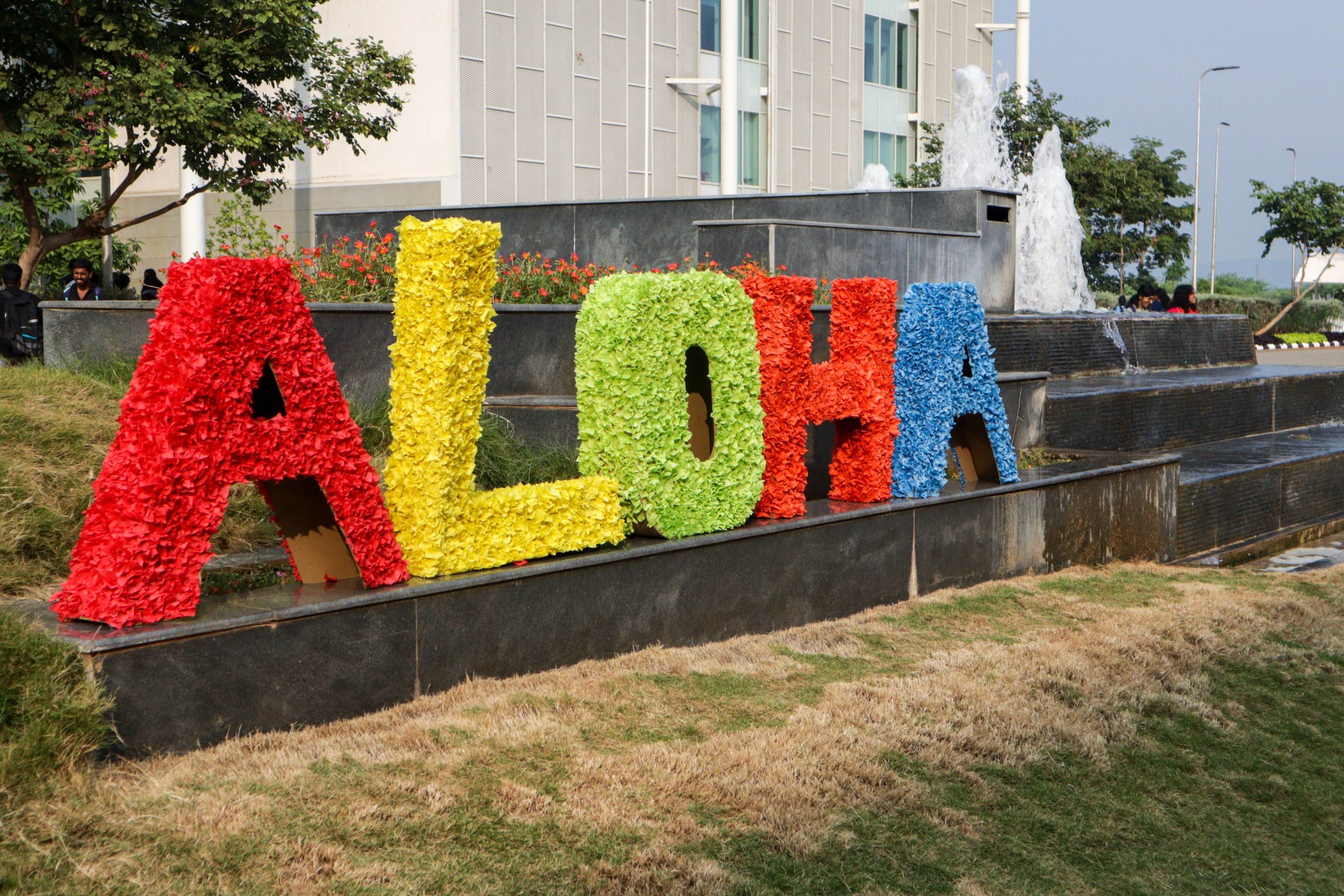 Senior students of SRM University-AP received the newcomers with a grand welcome party on November 25 and 26, 2022. The two-day-long celebrations were immaculate and encapsulated the radiant aura of the new-age university.
Senior students of SRM University-AP received the newcomers with a grand welcome party on November 25 and 26, 2022. The two-day-long celebrations were immaculate and encapsulated the radiant aura of the new-age university.Enthralling games, incredible performances, mouth-watering food stalls, booming music, and the brightest grins precisely describe Aloha 2022, the fresher’s day celebrations. Newcomers were welcomed to the festivity of SRM AP with the warmest colours and loudest cheers!
Honourable Vice Chancellor of SRM University- AP, Prof Manoj K Arora, inaugurated the event and asked the students to fully revel in the celebrations. All the faculty, staff and leadership members were also present at the festive occasion to welcome the brand-new batch of students to the campus.
A wide array of entertainment programmes was organised as part of the wholesome event. Students took over the stage by dancing to hype songs and singing their hearts out on both days of the event. The highlight of the event’s second day was the Mr&Ms Freshers contest. The vibe of the fresher’s party reached its peak with the vibrant DJ party filled with loud cheers and solid beats.
Cubing context, Tug of war, crossword, pop culture quiz, bucket game, water race, and many other fun games were also arranged beside the on-stage performances, which kept the students engaged on the two days of the celebrations. The food festival featuring mouth-watering street foods added flavour to the already colourful festival.
Continue reading → - Dr Anil K Suresh and team exploring novel domains of research at SRM AP! December 7, 2022
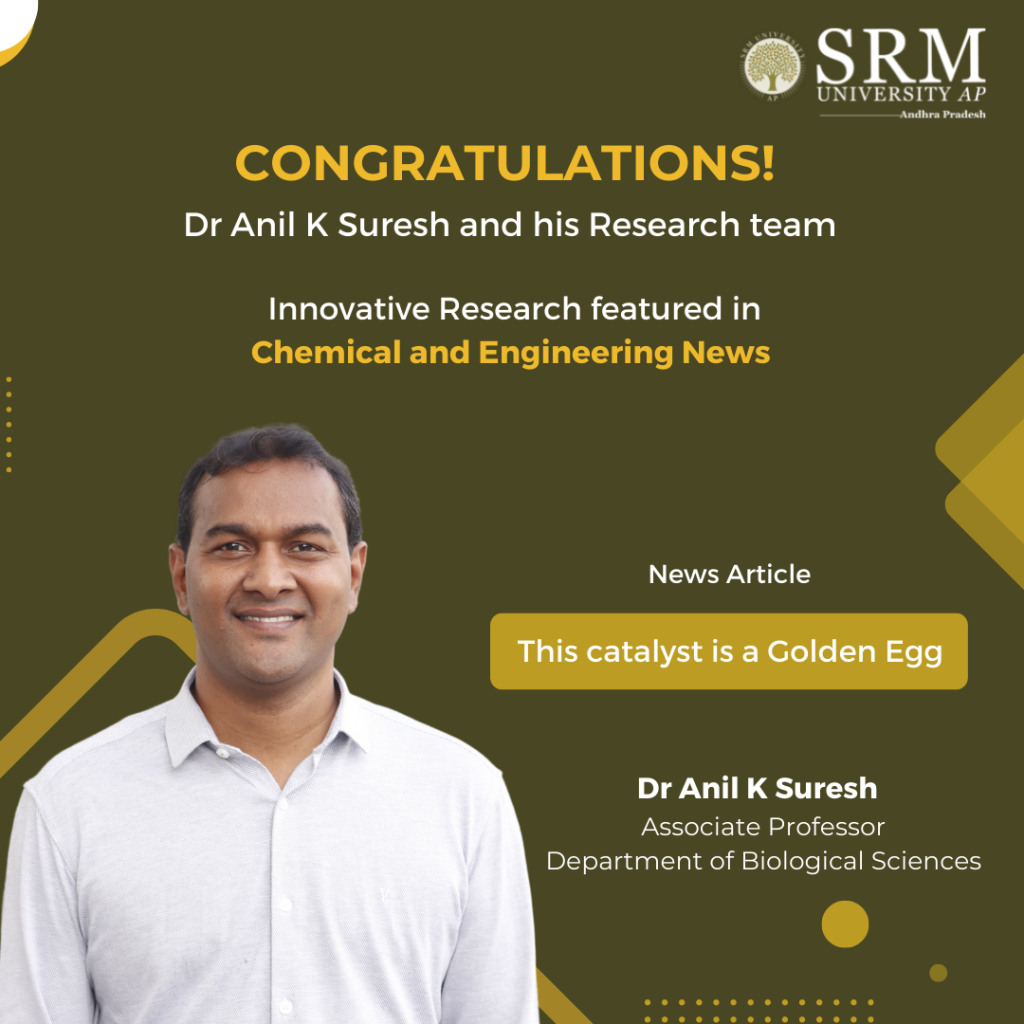
SRM AP proudly congratulates Dr Anil K Suresh, Associate Professor, Department of Biological Sciences and his cohort of research scholars for their rare achievement of having their paper featured in the prestigious weekly news magazine Chemical and Engineering News (ACS-C&EN). The news article titled “This catalyst is a Golden Egg“, edited by Prachi Patel highlights the innovative research conducted by Dr Anil K Suresh and his team on developing a low-cost, sustainable catalyst by infusing eggshells with gold nanoparticles that can be reused and eventually recycled.
The research paper titled Sustainable Bio-Engineering of Gold structured Wide-Area Supported Catalyst for Hand-Recyclable Ultra-Efficient Heterogeneous Catalysis (ACS Appl. Mater. Interfaces 2022, DOI: 10.1021/acsami.2c13564) highlights the team’s breakthrough advance in impregnating eggshells with gold nanoparticles to develop a cheap, and reusable ‘mega catalyst’. The research has used the robust “mega catalyst” to detoxify dye waste and run other organic reactions by dropping the eggshell catalyst into reaction solutions.
Dr Suresh and colleagues dipped waste eggshells collected from restaurants in a suspension containing gold chloride for 6 hours. Consequently, the amino acids on the shells reduced the gold ions to form crystalline gold nanoparticles. Dr Suresh attested this method to be one of the simplest syntheses of a supported catalyst that was ever reported. He emphasised that he and his colleagues have also grafted catalytic silver and copper oxide on eggshells and are now working on methods to do this for platinum and palladium.
SRM University-AP manifests pioneering advancement in innovative domains of research in the field of science and technology. The breakthrough research by Dr Anil K Suresh and his research team is of outstanding achievement and incredible addition to the institution’s laurels in the field of translational research.
Continue reading → - Dr Anil K Suresh’s path-breaking invention helps SRM University-AP “scale” new heights in scientific research! December 7, 2022
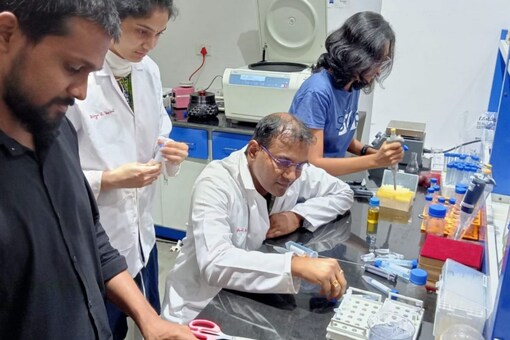
Dr Anil K Suresh, Associate Professor, Department of Biological Sciences with his team at SRM University-AP has developed a see-through transparent bio-template made from fish scale wastes. The sustainable transparent (over 85% transmittance) bio-template can substitute the use of eco-unfriendly disposal plastic cuvettes for UV-Visible Spectroscopy measurements in the spectrum of 350-900 nm. The path-breaking work to be published in the prestigious Journal of “Green Chemistry” by the Royal Society of Chemistry, is another in the line of extensive, socially, and scientifically relevant research studies that have taken form at SRM University-AP.
The multidisciplinary, research-intensive university since its inception, has emphasized research that has an impact on society. Through projects, collaborations and offering solid support to scholars, it has lived up to its mission of redefining the boundaries of advanced research. The new research by Dr. Suresh and his team comprising Ms Divya Parimi, Mr Chandra Bhatt, Mr Tharun Bollu, Ms Madhura, and collaborators Dr Malli and Mr Jacob is another noteworthy effort in the same vein. Besides minimizing the use of non-biodegradable plastic cuvettes for routine analytics, their bio-template offers many significant benefits.
UV-Vis spectroscopy is a versatile analytical tool used to examine the nature of various synthetic, biological and clinical molecules for pharmaceutical and environmental applications. The analysis is typically performed in a “cuvette or microplate” that is made of expensive quartz or eco-unfriendly plastic materials. The bio-template made from fish scale wastes can not only be an eco-friendly substitute but an effective one too. The team members have clearly demonstrated the practical on-bio template analysis of diverse analytes such as DNA, proteins, nanoparticles, organic dyes, bacteria, BSA assay, and dye-degradations.
Interestingly, the research team also demonstrated the ease in large-scale production of these bio-templates by generating 3000 of them at an affordable price. Dr Suresh, who owns the copyright for the invention after being granted an Indian patent says, “Large-scale development of the bio template can resolve several issues in performing sustainable research.” For starters, it will generate a demand for fish scales, which are usually discarded and can be a cause for foul smell and disease propagation. The use of these bio-templates will also minimize the need for non-biodegradable plastic cuvettes in routine analytics.
Dr Suresh highlights another benefit of the team’s path-breaking research when he says, “Unlike plastic cuvettes that demand a 500-fold analyte, our bio template allows the analysis at shallow 10 microlitre volumes, making it feasible to analyze expensive, rare, and high-risk analytes.” After use, the transparent bio template can be discarded back into the environment without any hesitation, as it is entirely biodegradable. The research that stemmed from the belief that food waste as a bio-resource stratagem has tremendous potential in routine scientific and pharma UV-Vis analytics is living up to that goal.
Dr Suresh is now set to bring the transparent bio-template made from fish scale wastes to the scientific community as a sustainable solution. He is grateful to his team’s efforts and the support he has received from the management at SRM University-AP throughout the research project. “I would like to thank Dr P Sathyanarayanan, President; Prof D Narayana Rao, Pro-Vice-Chancellor, Prof V S Rao, Former Vice-Chancellor and the entire management team for their untiring encouragement, motivation, and support in all my endeavours,” he says as the university “scales” new heights in the world of research, one significant invention at a time.
Continue reading → - Detecting Breast cancer subtypes using an innovatory ensemble of SwinTs December 6, 2022
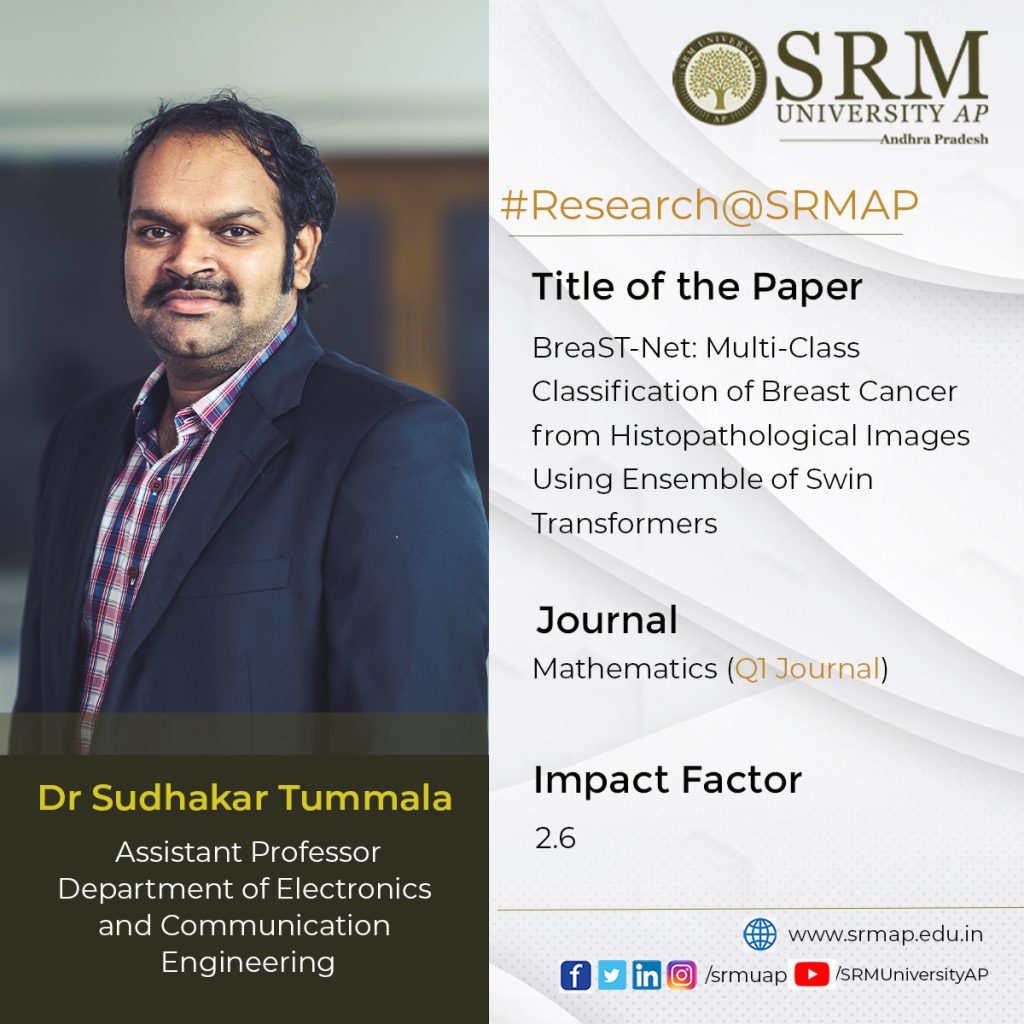
Breast cancer (BC) is one of the most common types of cancer among women with a high mortality rate. Histopathological analysis facilitates the detection and diagnosis of BC but is a highly time-consuming specialised task, dependent on the experience of the pathologists. Hence, there is a dire need for computer-assisted diagnosis (CAD) to relieve the workload on pathologists. Dr Sudhakar Tummala, Assistant Professor, Department of Electronics and Communication Engineering, has conducted breakthrough research on this domain in his paper titled BreaST-Net: Multi-Class Classification of Breast Cancer from Histopathological Images Using Ensemble of Swin Transformers published in the Q1 Journal Mathematics, having an Impact Factor of 2.6.
Abstract
Breast cancer (BC) is one of the deadly forms of cancer and a major cause of female mortality worldwide. The standard imaging procedures for screening BC involve mammography and ultrasonography. However, these imaging procedures cannot differentiate subtypes of benign and malignant cancers. Therefore, histopathology images could provide better sensitivity toward benign and malignant cancer subtypes. Recently, vision transformers are gaining attention in medical imaging due to their success in various computer vision tasks. Swin transformer (SwinT) is a variant of vision transformer that works on the concept of non-overlapping shifted windows and is a proven method for various vision detection tasks. Hence, in this study, we have investigated the ability of an ensemble of SwinTs for the 2- class classification of benign vs. malignant and 8-class classification of four benign and four malignant subtypes, using an openly available BreaKHis dataset containing 7909 histopathology images acquired at different zoom factors of 40×, 100×, 200× and 400×. The ensemble of SwinTs (including tiny, small, base, and large) demonstrated an average test accuracy of 96.0% for the 8-class and 99.6% for the 2-class classification, outperforming all the previous works. Hence, an ensemble of SwinTs could identify BC subtypes using histopathological images and may lead to pathologist relief.
A brief summary of the research in layperson’s terms
Breast cancer (BC) is the second deadliest cancer after lung cancer, causing morbidity and mortality worldwide in the women population. Its incidence may increase by more than 50% by the year 2030 in the United States. The non-invasive diagnostic procedures for BC involve a physical examination and imaging techniques such as mammography, ultrasonography and magnetic resonance imaging. However, the physical examination may not detect it early, and Imaging procedures offer low sensitivity for a more comprehensive assessment of cancerous regions and identification of cancer subtypes. Histopathological imaging via breast biopsy, even though minimally invasive, may provide accurate identification of the cancer subtype and precise localization of the lesion. However, this manual examination by the pathologist could be tiresome and prone to errors. Therefore, automated methods for BC subtype classification are warranted.
Deep learning has revolutionised many areas in the last decade, including healthcare for various tasks such as accurate disease diagnosis, prognosis, and robotic-assisted surgery. There were studies based on deep convolutional neural networks (CNN) for detecting BC using the aforementioned imaging procedures. However, CNNs exhibit inherent inductive bias and are variant to translation, rotation, and location of the object of interest in the image. Therefore, image augmentation is generally applied while training CNN models, although the data augmentation may not provide expected variations in the training set. Hence, self-attention based deep learning models that are more robust towards the orientation and location of an object of interest in the image are rapidly growing.
SwinTs are an improved version of earlier vision transformer (ViT) architecture and are hierarchical vision transformers using shifted windows that work based on self-attention. For efficient modelling, self-attention within local windows was proposed and computed, and to evenly partition the image, the windows are arranged in a non-overlapping manner. The window-based self-attention has linear complexity and is scalable. However, the modelling power of window-based self-attention is limited because it lacks connections across windows. Therefore, a shifted window partitioning approach that alternates between the partitioning configurations in consecutive Swin transformer blocks was proposed to allow cross-window connections while maintaining the efficient computation of non-overlapping windows. The shifted window scheme in Swin transformers offers increased efficiency by restricting self- attention computation to local windows that are non-overlapping while also facilitating a cross-window connection. Overall, the SwinT network’s performance was superior to that of the standard ViTs.
Therefore, the paper analyses the ability of an ensemble of Swin transformer models (BreaST-Net) for the automated multi-class classification of BC by investigating histopathological images. The work dealt with both benign and malignant subtypes. Further, the benign cancer subtypes include fibroadenoma, tubular adenoma, phyllodes tumour, and adenosis. Whereas the malignant subtypes contain ductal carcinoma, papillary carcinoma, lobular carcinoma, and mucinous carcinoma.
Social implications of the research
Dr Sudhaker Tummala explains that the computer-aided subtyping of breast cancer from histopathology images using an ensemble of fine-tuned SwinT models can be an alternative to manual diagnoses, thereby reducing the burden on clinical pathologists.
Collaborations
- Prof. Seifedine Kadry, Department of Applied Data Science, Noroff University College, Kristiansand, Norway
- Dr Jungeun Kim, Division of Computer Science, Department of Software, Kongju National University, Korea
In the future, Dr Tummala will advance his research to add explainability to the ensemble model predictions and also to develop models that can work on fewer data samples.
Continue reading →


